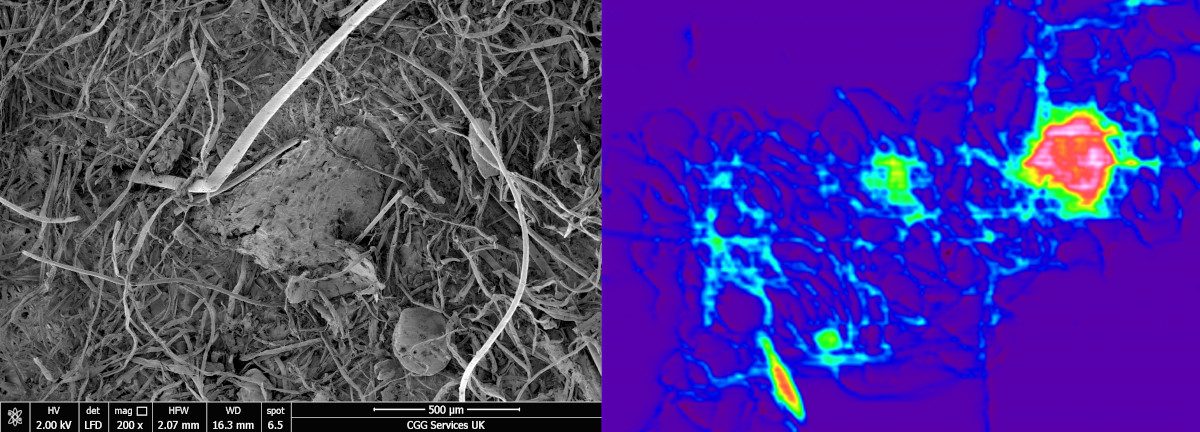
A recent project seems to lift the lid on some of the microscopic material washed into drainage systems by commercial and industrial activity. Environmental monitoring expert CGG Environmental Science and partners have used a number of techniques to characterise micropollutants and contaminants, including microplastics and synthetic fibres, captured by domestic and industrial filters.
The samples included residue from clothes washing machines and multi-use industrial sites, which was captured using filtration technology developed by project partner Matter. Micropollutants were detected using CGG’s rapid mass screening method. The project also employed micro-FTIR and thermal analyses provided by Experimental Techniques Centre (ETC) at Brunel University.
The domestic appliance samples contained a mixture of polyester, rayon, nylon and cotton/synthetic fibre blends together with embedded fragments of acrylic, paints or resins. Industrial site samples were found to be heavily polluted, containing tyre particulates, paints, polypropylene and polyester with high levels of zinc, copper, chromium and lead.
The goal of the project is to contribute to efforts to prevent micropollutants from entering the environment, harming organisms and entering the food chain. According to CGG, the analysis workflow proved to be highly effective at identifying and characterizing materials within complex mixed samples. “This approach can be scaled to quantify micropollutants and contaminants in large volumes and contribute to the UK government’s 25-year environmental plan to achieve zero avoidable plastic waste by 2042, and zero avoidable waste by 2050.”
Adam Root, CEO of Matter, said the micropollutant analysis “provides a clear picture of the range and scale of contaminants that are washed into our drainage systems every day from domestic and commercial activities.”
CGG makes its environmental monitoring solutions available to stakeholders including industry, charities, NGOs, local authorities and government agencies.






